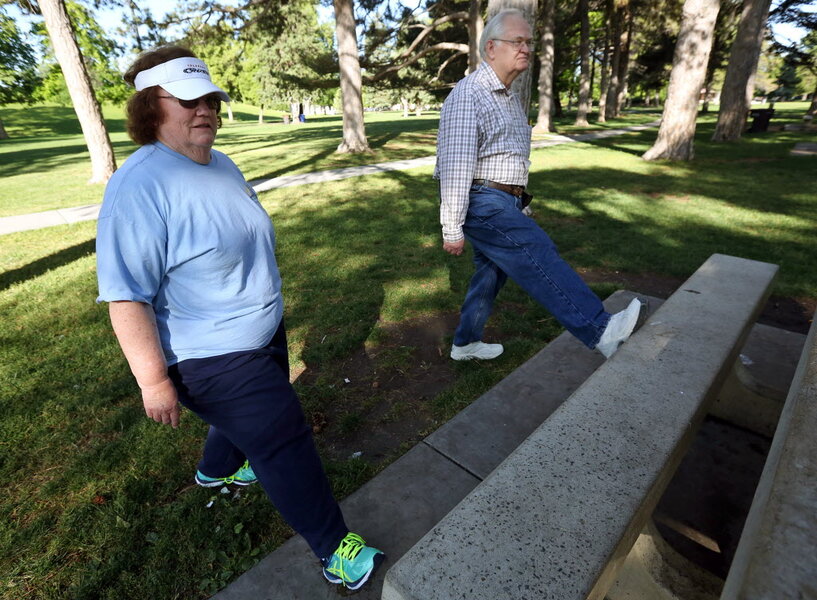Shifting views of seniors: less burden, more asset
Loading...
Americans of a “certain age” abound at the upper levels of American governance. President Trump is the most obvious example. Just over half of US senators will be 65 or older by the end of this year. On the Supreme Court, five of nine justices are over 65. These “senior citizens” make crucial decisions for the majority of Americans younger than them.
Just eight decades ago, when the Social Security system began, 65 was codified as the start of “old age.” Now many people of that vintage may feel in the prime of life.
Measured by years alone, Americans are on average getting older. According to the Harvard Business Review, for the first time more Americans are now over 50 than under 18.
A popular notion is that a war is brewing between generations – young working Americans resenting that they must pay more into Social Security and Medicare to support an expanding cohort of older Americans. There’s truth in that sentiment. In 1980, there were 19 people over 65 for every 100 people between 18 and 64. Last year, there were 25 people over 65 for every 100 people between 18 and 64. And the worker-to-retiree ratio is projected to be even worse by 2030.
But the idea that older people will be a large financial burden is being challenged. To begin with, programs like Social Security and Medicare can be adjusted, as they have in the past, while certain trends, such as Americans delaying full retirement, could alter the projections.
A pair of new government reports show that funding for Medicare will run out in 2026, three years earlier than previously forecast. The Social Security trust fund, which includes both old age and disability payments, will be able to pay only 75 percent of benefits by 2035.
Despite these warnings, modest fixes are available, including making small changes in the age of eligibility that recognize lengthening life spans. Even that step may not be needed. By one estimate, increasing the Social Security payroll tax by 2.88 percentage points could eliminate the expected revenue shortfall for another three-quarters of a century.
But actuarial tables, however useful for government planning, shouldn’t impose artificial limits on what older Americans do. Aging isn’t what it used to be. Today, 75-year-olds on average will live just as many additional years as the average 65-year-old did in 1952. And many of today’s “elderly” are active as caregivers of grandchildren while parents work.
Categorizing by age can be just as harmful as by gender or race. Labeling people by an age category (“greatest generation,” “baby boomer”) is a recent phenomenon. Birthdays weren’t even widely celebrated until the 20th century, notes historian Howard Chudacoff in his book “How Old Are You?” The idea of being “middle aged” wasn’t popularized until after World War I.
Marketing continues to stratify Americans by calendar years, walling off the beneficial effects of older and younger people rubbing shoulders. More and more older Americans are sequestered in communities intended only for those over 55.
Companies are beginning to consider age diversity to be as important as racial and gender diversity. (Some observers suggest businesses try the “shoe test”: Look under desks. If everyone’s wearing the same kind of footwear – whether wingtips or flip-flops – the business would benefit from more diversity.)
Today, suggests one expert, Americans have an opportunity to make a “fresh map of life itself,” throwing off outworn ideas about aging. Policies that encourage older Americans to expand the possibilities of their “senior years” will help change limited perceptions and benefit all of society.








